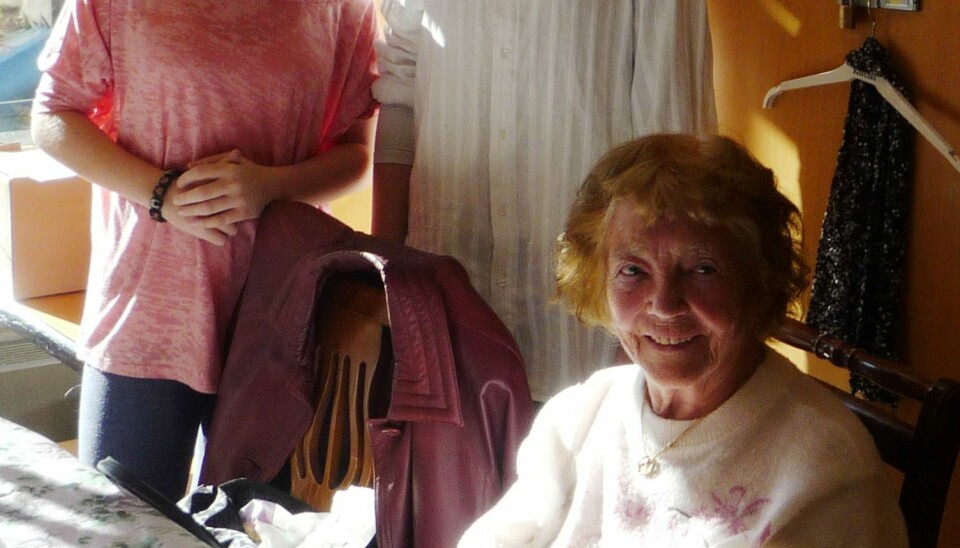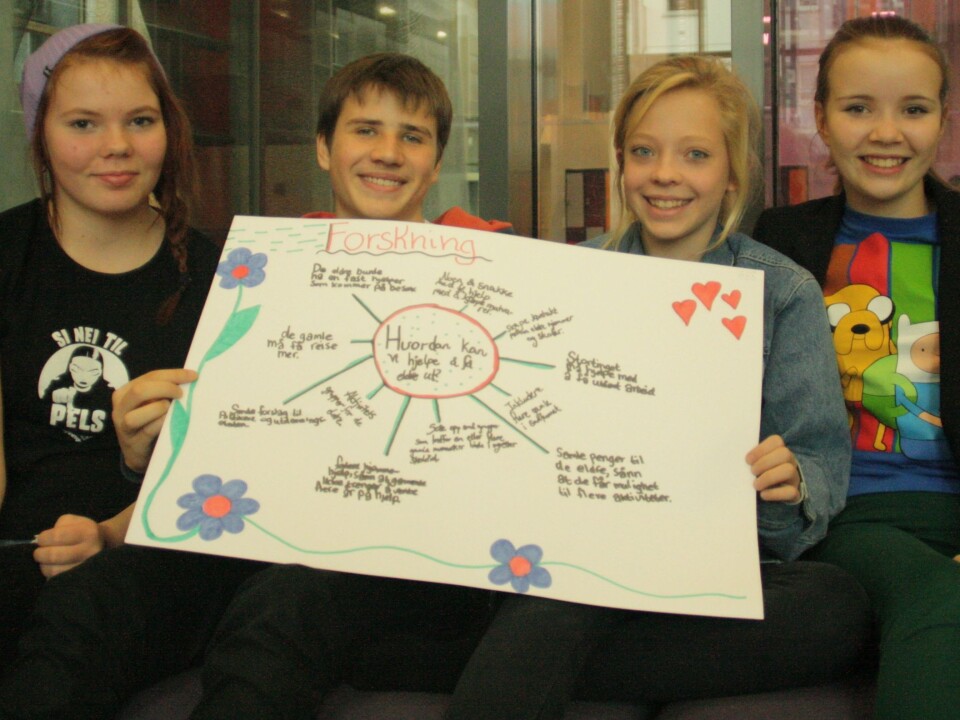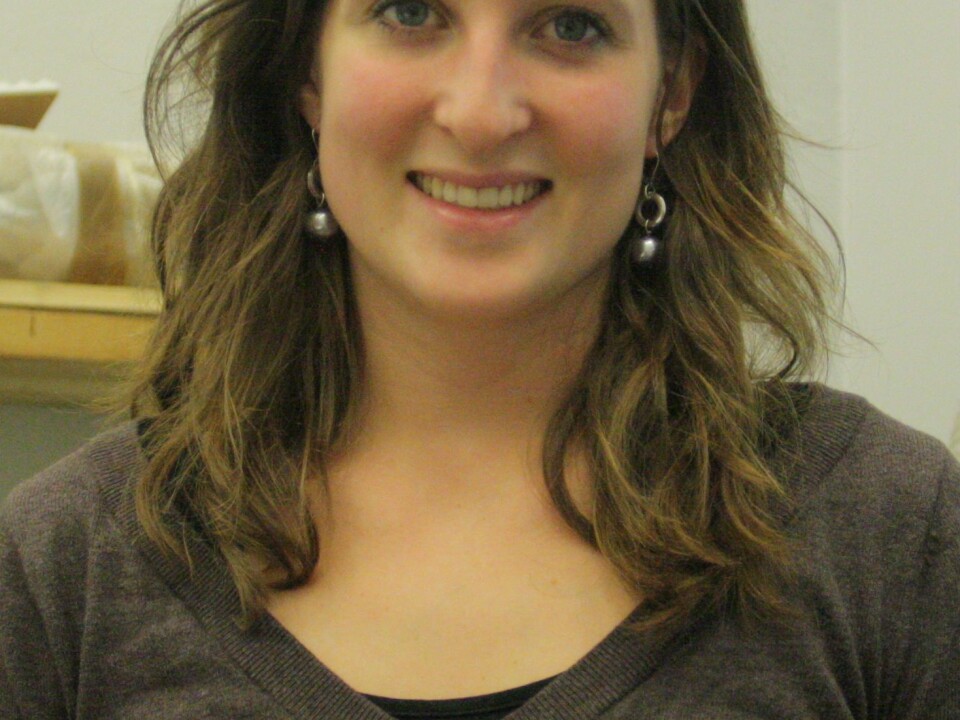
Young students want to improve the daily lives of the elderly
A school project found an answer to old people's needs: let teenagers take the elderly on exursions.
Denne artikkelen er over ti år gammel og kan inneholde utdatert informasjon.
In the past six weeks nine young pupils from an Oslo school have worked on a research project aimed at improving the life quality of people who are their seniors by two or three generations.
The kids have been participating in the annual international research and technology competition First Lego League (FLL).
This year the challenge put to them was: “How to improve the quality of life for seniors by helping them continue to be independent, engaged, and connected in their communities?”
The young researchers named their team after their school, Frydenberg, and arrived at a way to give the elderly in Norway a more socially active daily life.
Letters and statistics

Team Frydenberg chose to start with some research to find out what the elderly need in their everyday lives.
“We found statistics, some from Statistics Norway (SSB), about the most common injuries among the elderly. We also came across letters old people had written to newspaper editors about their daily life,” says Hedda Larssen.
The team of young social scientists visited Sinsen Eldresenter, a local welfare service for the elderly.
Wanting out
“One of the things we asked the elderly was what they needed and wanted from us,” says Larssen.

An answer they got from seniors time and again was “help to get out more often”.
In their report the researchers referred to SSB’s studies of demographics and living conditions and noted that no country in Europe spends as much as Norway on care for the elderly.
“Still, the elderly feel they aren’t getting the help they need,” writes the Frydenberg research team.
They added that culture is a prime factor because in other countries it’s more common for the elderly to live with their families, and thus have a more socially active daily life. In Norway old people are more likely to live alone or in nursing homes.
So they posed the following question: How do we help the elders get out more?
In school hours
“We propose a routine in junior high schools scheduling time for pupils to visit elderly care centres in their communities during school hours, so youth and the elderly can find things to do together,” says Jenny Skoland.
“This can benefit both groups,” Larssen adds.
“They can get out some and we can learn things from them.”
All the young researchers concur that the elderly plenty of exciting things to teach them, for instance in their subjects social studies, history and the natural sciences.
“We can learn more from them about how the world has changed, for example regarding the rights we have in society,” says Skoland.
Letter to government officials
The young scientists want to see this idea put into effect.
So their next step is to write a letter to Oslo’s Department of Knowledge and Education proposing that schools nationwide set aside a certain number of school hours every month where pupils can visit facilities for the elderly.
“Schools are an available resource which ought to be utilised more for socially useful tasks,” they reason in their report.
These kids’ entry in the 2012 Senior Solutions Challenge has been a big project and they say it has kept them at school for up to 11 hours a day.
The Oslo teenagers have blogged on the FLL website that they enjoyed interviewing the elderly about their problems in daily life and looking into what they could do to help the oldsters out.
More inspirational than a regular classroom
In addition to conducting research, competing teams have been given technological assignments. These have to be solved by building a Lego robot and programming it to tackle various tasks.
“We were given 14 or 15 programming problems and get points for the ones we solve well,” explains Jørgen Johansen.
Ida Maria Evensen teaches math and natural sciences at Frydenberg School in Oslo and is one of the team’s two advisors.
“I wanted the school to enter the competition because it give the teenagers a chance to learn about research and technology in a different and more inspirational way than in the classroom,” she says.
----------------------------
Read this article in Norwegian at forskning.no
Translated by: Glenn Ostling






























